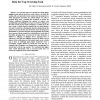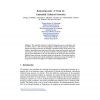246 search results - page 37 / 50 » Robot control with biological cells |
ICRA
2009
IEEE
13 years 4 months ago
2009
IEEE
In a previous paper, we developed a robotic finger equipped with optical three-axis tactile sensors, of which the sensing cell can separately detect normal and shearing forces. Wit...
BMCBI
2010
13 years 6 months ago
2010
Background: Transcriptional gene regulation is one of the most important mechanisms in controlling many essential cellular processes, including cell development, cell-cycle contro...
ICRA
2002
IEEE
13 years 11 months ago
2002
IEEE
When assembling MEMS devices or manipulating biological cells it is often beneficial to have information about the force that is being applied to these objects. This force informa...
DAGSTUHL
2003
13 years 8 months ago
2003
We embodied networks of cultured biological neurons in simulation and in robotics. This is a new research paradigm to study learning, memory, and information processing in real tim...
ISBRA
2010
Springer
14 years 1 months ago
2010
Springer
Biological research is becoming increasingly complex and data-rich, with multiple public databases providing a variety of resources: hundreds of thousands of substances and interac...


